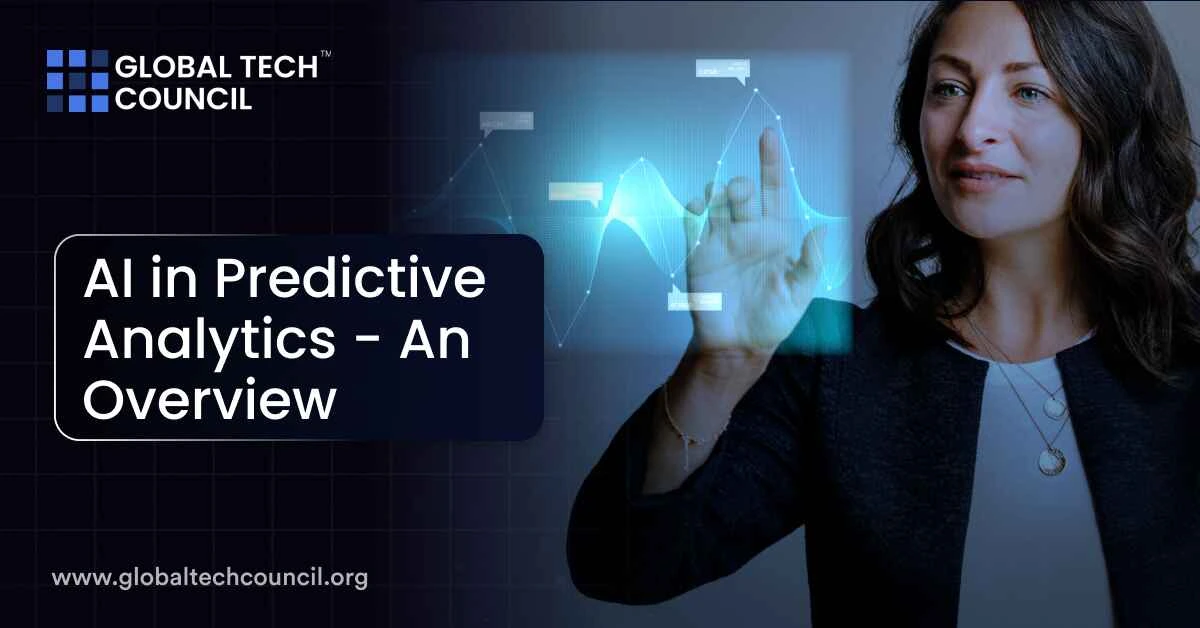Artificial Intelligence (AI) is now central to predictive analytics, reshaping how various sectors anticipate changes and plan ahead. By digging into past data, AI systems can spot future patterns, trends, and behaviors with impressive precision.
Exploring Predictive Analytics
Predictive analytics revolves around using statistics and machine learning tools to examine present and past data, offering a glimpse into future possibilities. It lets companies pinpoint patterns, supporting more strategic choices. When AI enters the mix, it greatly strengthens this process, handling huge data amounts faster and with heightened accuracy.
If you’re exploring AI-driven prediction models, becoming a CAIE Certified Artificial Intelligence (AI) Expert® could be a strong next step.
AI’s Contribution to Predictive Analytics
AI boosts predictive analytics by speeding up data handling, picking up on complex trends, and raising forecast reliability. Machine learning, a major part of AI, uses data to forecast outcomes, adjusting predictions without direct programming. This learning ability helps AI models get better over time, leading to trustworthy insights.
Notable Developments and Uses
Healthcare
In healthcare, AI-driven predictive analytics is redefining how patients receive care. For example, Gilead Sciences and ZS Associates use AI models to predict when a healthcare provider might prescribe certain medications, allowing for targeted and timely care actions.
Finance
In finance, AI powers predictive analytics to foresee market shifts and refine investment methods. One case is MarketSenseAI, which applies GPT-4’s reasoning strengths to choose stocks by interpreting market shifts, relevant news, and larger economic factors. Testing on top S&P stocks over 15 months displayed impressive results, producing higher returns, with added gains ranging from 10% to 30% and an overall return of up to 72%.
Retail
Retailers are now tapping into AI-powered predictive analytics to improve how they manage inventory and respond to consumer demand. Platforms like Autone and Prediko offer AI-based insights that help stores optimize stock levels and make demand predictions with more precision. This setup tackles common challenges like adjusting to trend changes and coping with outside factors, such as weather, which leads to less wastage and better efficiency.
Aviation
In aviation, AI is applied to enhance operations, including flight route planning and fuel management. Since 2018, Qantas has utilized AI to fine-tune flight paths, manage fuel use, and handle restrictions, such as closed airspace. This has reportedly saved $92 million in fuel. AI’s role in aviation goes beyond just flights; it extends to maintenance, route optimization, and emissions control.
Government
Government bodies are using AI in predictive analytics to improve public safety and resource management. In one case, U.S. intelligence agencies have started cautiously exploring generative AI to process growing amounts of data and stay competitive globally. Despite AI’s promise, there are known limitations, including risks related to data security and reliability. For example, Rhombus Power’s AI managed to predict Russia’s advance into Ukraine with an estimated accuracy of 80%.
If you’re focused on creating predictive analytics solutions, the Certified Artificial Intelligence (AI) Developer® credential could be a valuable asset.
Challenges and Points to Consider
While AI-powered predictive analytics brings many advantages, there are still hurdles. The quality and completeness of data are crucial; faulty or missing information can lead to inaccurate predictions. Furthermore, ethical issues, such as biases in AI models, need attention to prevent unfair results. It’s important for organizations to have strong data management practices in place and to keep a close eye on AI systems to minimize such risks.
Becoming a Certified Prompt Engineer™ can be a smart career choice for those who want to optimize AI for predictive analytics.
Looking Ahead
AI’s place in predictive analytics is expected to broaden across diverse fields. With ongoing improvements in machine learning and data handling, predictive accuracy and insights will only get sharper. As more companies adopt AI-enhanced predictive tools, they’ll be better prepared to foresee trends, refine processes, and make strategic choices.
Wrap-Up
AI’s role in predictive analytics is revolutionizing sectors by providing richer insights and sharper forecasts. From healthcare to finance, retail to government, AI-driven predictive models help organizations prepare for the future and make proactive moves. With advancing technology, AI’s place in predictive analytics will keep evolving, offering fresh opportunities and new challenges for businesses and communities alike.

